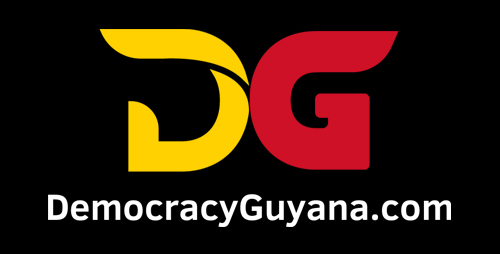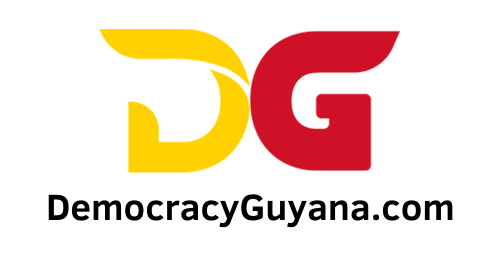In his essay published in Stabroek News on July 21, 2025, Elton Bollers, under the caption “IDB’s estimate likely provide a more accurate view of the significant poverty level…”, argues that the findings from a 2024 Inter-American Development Bank’s (IADB) working paper titled “Ten findings about poverty in Latin America and the Caribbean”, paints a much more realistic picture on poverty than this author’s “optimistic claims”.
Bollers, a respected economist by training who is affiliated with the IADB either as a consultant or otherwise (formerly or presently), goes on to argue that:
“Data-driven decision-making is always better than guesswork. Instead of dismissing the statistics as outdated or inaccurate, we should call for updated, transparent poverty data. Ignoring the facts in favour of anecdotes or selected indicators not only distorts the truth but also disregards the lived experiences of hundreds of thousands of Guyanese. The national conversation on poverty must be rooted in evidence, empathy, and practical solutions, not denial. Acknowledging the problem is the first step toward solving it”.
While this author agrees in principle with his foregoing contention and welcomes his contribution to this discourse, it is regrettable that he has not had the benefit of the full context of the debate that spilled over into the print media. The debate in question originated during a webinar panel discussion featuring the undersigned Dr. Janette Bulkan, held in conjunction with the launch of a book by Dr. Ivelaw Griffith.
Dr. Bulkan cited the World Bank’s (WB) reported poverty rate of 48% and questioned the delayed release of the 2022 census report. In response, the undersigned clarified that while the report has not been publicly released, those with working relationships at the Bureau of Statistics (BoS) are aware that the census survey has been completed and the report is in its final stages. As derived from informal consultations with BoS officials—pending formal ratification—this author contends that the poverty rate has declined significantly, from over 90% in the 1980s to an estimated 20% or less.
Notwithstanding, the question of the true poverty level in Guyana remains a topical issue for debate especially in this political campaign season ahead of the 2025 General and Regional elections, quite understandably. To this end, it would appear that Elton Bollers seems to be in alignment with the Alliance for Change (AFC)—since his non-technical missive was cited extensively by the AFC leader on his social media platform, to cement a certain political narrative.
Discussion and Analysis
Consequently, this author feels compelled to address the referenced IADB’s working paper cited by Bollers. It is disappointing—and indeed surprising— that he embraced in its entirety, without even demonstrating a modicum of academic probity. This is especially troubling against the backdrop of the unprecedented degree of economic development between 2020 and 2025, the socio-economic impacts thereof.
Ironically, Bollers might do well to reflect on his own invocation of “intellectual honesty”, particularly in light of his conduct, and more specifically, his uncritical and unscholarly engagement with the poverty debate.
The referenced IADB working paper was highly misrepresented by Bollers, and more so, on the part of the IADB, the dataset used in its compilation for Guyana was arguably not the appropriate dataset, save and except, if it was used to extrapolate the poverty rate with the aid of a broader set of established variables and dataset. This, however, was not sufficiently transparent in the methodology description employed by the IADB.
Fundamental Issues with the IADB Poverty Report
Towards that end, the IADB states that it utilized household surveys for most countries to calculate poverty rates. In cases where household surveys were unavailable—such as in Guyana—the Bank opted to use the Guyana Labour Force Survey (GLFS) for the years 2016–2018 and 2021.
In so far as the report’s methodology and data sample are concerned, there are several fundamental flaws that render its findings on Guyana’s poverty rate both invalid and inaccurate:
a. The value for 2021 was maintained for 2022 and 2023, implying that the IADB assumed no meaningful or impactful changes occurred during those years. This assumption is demonstrably inaccurate.
b. The report does not clearly explain how the GLFS data was used to calculate Guyana’s poverty rate, nor does it outline the assumptions underpinning the methodology.
c. The GLFS data for 2021 was collected during the COVID-19 pandemic—a period marked by the loss of over 20,000 jobs, affecting an estimated 40,000 households. These job losses included politically motivated cuts administered by the APNU+AFC Government, particularly in the sugar belt and hinterland regions.
Notably, the IADB conducted a separate household survey in 2020 to assess the impact of the pandemic. That survey found that 71.6% of households reported income loss in April 2020 compared to January 2020. The sample size comprised 1,691 respondents with an average household size of five, representing approximately 338 households. This accounts for just 0.23% of the population and 0.15% of total households in Guyana—an arguably inadequate sample to determine the national poverty rate. Moreover, the methodology does not clarify whether the sample was representative of Guyana’s diverse geographic, social, and economic demographics.
As regards Bollers’ inflation argument— intended to diminish the nearly six-fold increase in income levels between 2020 and 2025, the economist overlooked the impact of indirect subsidies and direct targeted cash transfers. It would be worth noting that the indirect subsidies alone approximate to $427 billion annually, translating to ≈$1.9 million per household. These measures, implemented through the government’s fiscal policies aimed at combating cost of living pressures—mainly food prices—in the short-to-medium term, ought to be accounted for in the calculation of household income.
Conclusion
In sum, while the call for data-driven policymaking is both timely and necessary, it must be grounded in methodological rigor, contextual awareness, and transparency. The IADB’s working paper, as cited by Bollers, falls short of these standards in its treatment of Guyana’s poverty data. By relying on outdated or contextually limited datasets—without adequate explanation or adjustment for significant socio-economic developments between 2020 and 2025—the report risks misrepresenting the lived realities of Guyanese households.
Moreover, any serious analysis of poverty must account for the full spectrum of fiscal interventions, including indirect subsidies and direct transfers, which have played a critical role in mitigating cost-of-living pressures. To ignore these factors is to present an incomplete and potentially misleading narrative.
As the national conversation on poverty continues—particularly in the lead-up to the 2025 General and Regional Elections—it is imperative that all contributors to this discourse uphold the highest standards of intellectual honesty and analytical integrity. Only then can we arrive at a shared understanding of the challenges we face, and the solutions required to address them.





